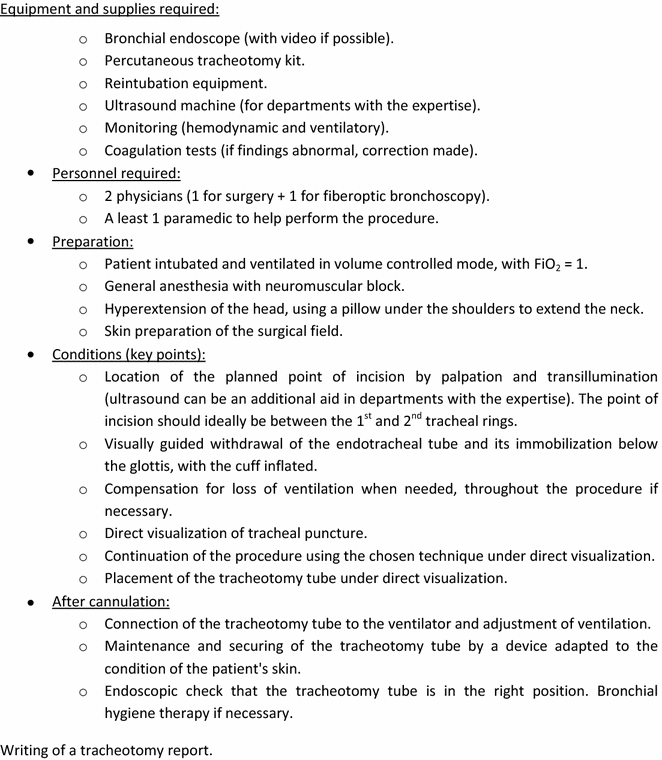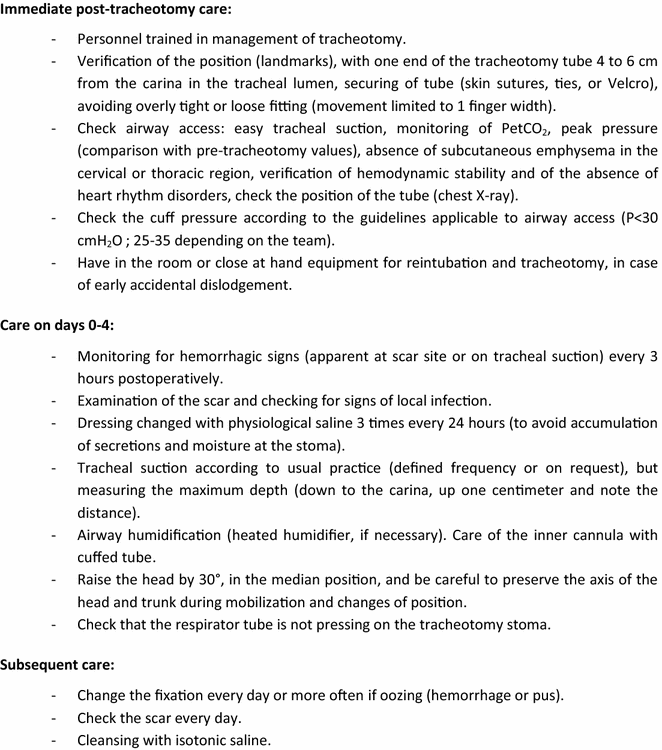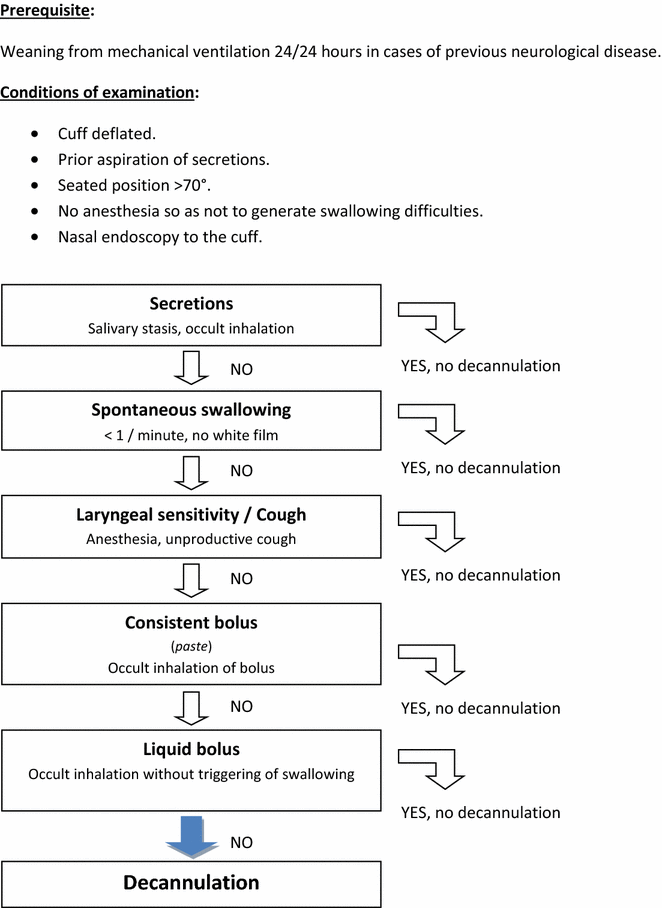Tracheotomy in the intensive care unit: guidelines from a French expert panel
- PMID: 29546588
- PMCID: PMC5854567
- DOI: 10.1186/s13613-018-0381-y
Tracheotomy in the intensive care unit: guidelines from a French expert panel
Abstract
Tracheotomy is widely used in intensive care units, albeit with great disparities between medical teams in terms of frequency and modality. Indications and techniques are, however, associated with variable levels of evidence based on inhomogeneous or even contradictory literature. Our aim was to conduct a systematic analysis of the published data in order to provide guidelines. We present herein recommendations for the use of tracheotomy in adult critically ill patients developed using the Grading of Recommendations Assessment, Development, and Evaluation (GRADE) method. These guidelines were conducted by a group of experts from the French Intensive Care Society (Société de Réanimation de Langue Française) and the French Society of Anesthesia and Intensive Care Medicine (Société Francaise d'Anesthésie Réanimation) with the participation of the French Emergency Medicine Association (Société Française de Médecine d'Urgence), the French Society of Otorhinolaryngology. Sixteen experts and two coordinators agreed to consider questions concerning tracheotomy and its practical implementation. Five topics were defined: indications and contraindications for tracheotomy in intensive care, tracheotomy techniques in intensive care, modalities of tracheotomy in intensive care, management of patients undergoing tracheotomy in intensive care, and decannulation in intensive care. The summary made by the experts and the application of GRADE methodology led to the drawing up of 8 formal guidelines, 10 recommendations, and 3 treatment protocols. Among the 8 formal guidelines, 2 have a high level of proof (Grade 1+/-) and 6 a low level of proof (Grade 2+/-). For the 10 recommendations, GRADE methodology was not applicable and instead 10 expert opinions were produced.
Figures




References
Publication types
LinkOut - more resources
Full Text Sources
Other Literature Sources
Medical

